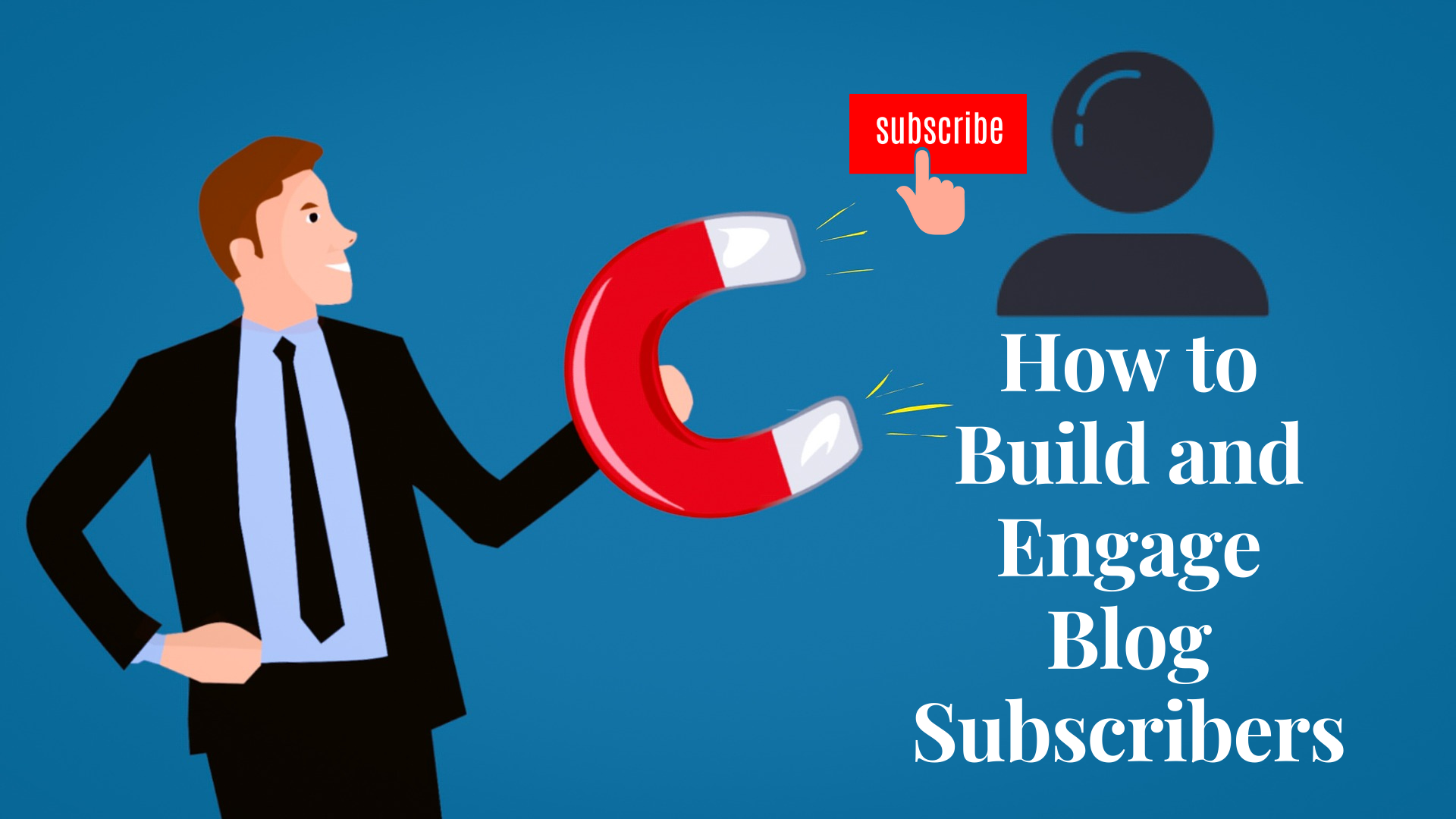A challenge most business blogs face is building a sustainable following for their blogs. Your blog content may be top-notch, but you are still not getting enough repeat visitors. There are two reasons why this could happen. Either you are not building loyal blog subscribers or your content is not engaging enough.
Assuming the problem is not with the content, then you need to turn your focus towards getting blog subscribers and ensuring you engage them enough.
TL;DR Here’s a quick summary video of this article.
Here’s a list of 15 tips to help you build a solid blog subscribers list and keep them coming back for more:
1. Know your target audience and what they want to read
2. Offer readers compelling incentives for signing-up
3. Keep your best content accessible only to blog subscribers
4. A catchy headline is the first thing they see
5. Make your blog content easy to share
6. Contribute posts to other popular blogs in your niche
7. Create targeted opt-in forms, landing page and CTAs
8. Don’t forget the mobile users
9. Use pop-ups at the right time
10. Promote your blog outside of your website
11. Show them some Social Proof
12. Add a quick interesting quiz
13. A/B test to see what works
14. Pay attention to aesthetics and UX
How to Build a Solid Blog Subscribers List
1. Know your target audience and what they want to read
Writing generic blog content without a target audience in mind will get you nowhere as very few people will find it useful.
Create personas for your audience so you know who you are writing for. Follow up on the current trends and industry news. Find the kind of content and keywords that your competitors are ranking for, and build your own informed keyword and content strategy accordingly.
Pick up the audience’s queries and pain points and create content to address them. When you start offering solutions to their problems, they will begin to follow your blog for more.
Only when a reader finds your blog content really useful, will they be willing to subscribe to updates.
2. Offer readers compelling incentives for signing-up
Getting blog subscribers is not easy unless you have something very compelling to offer. An average person gets nearly 121 business emails every day. Why would they subscribe if you are not giving them something they need? What’s in it for me? Obviously great content is the biggest incentive of all. But there are others that you can consider as well.
These other opt-in incentives can be in the form of access to exclusive content, or giveaways. For instance, if you run a fitness blog, you can offer your first 10 email subscribers of the month a free customized diet plan.
The rewards or freebies don’t always have to involve discounts or monetary benefits. These can be exclusive downloadable content such as guides, ebooks, or free tutorials. You can also offer a content upgrade, which is a more detailed and elaborate version of the post the reader is viewing. Try out different offers and see which ones perform best.
3. Keep your best content accessible only to blog subscribers
If you have some high-value blog content that is rich and detailed, it is best kept hidden behind the subscription button. If you give away everything for free, why would anyone need to subscribe? Get subscribers on your page by giving them just a glimpse of your best content pieces and to read more, ask them to opt-in. This strategy can actually build your email list by a lot.
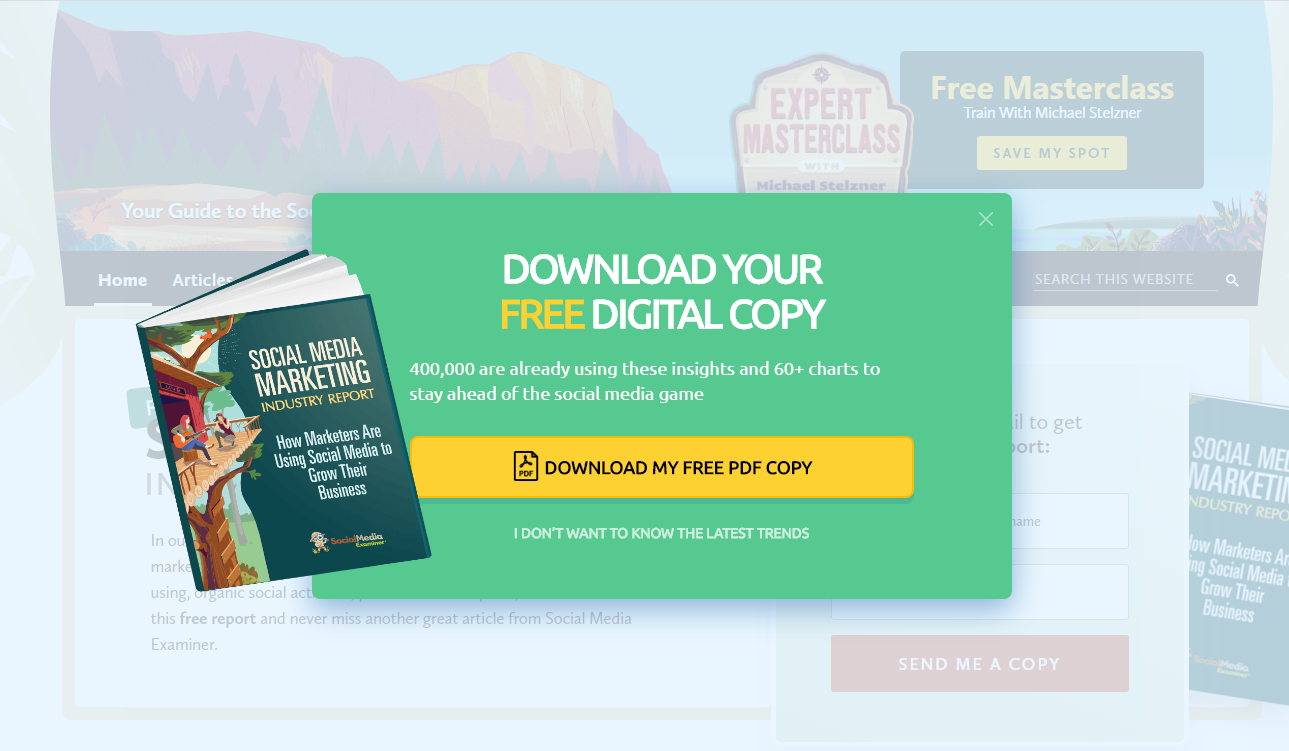
Social Media Examiner, for example, has kept this Industry Report locked behind an opt-in form. Also, the opt-in form makes it look like you’ll be missing out on something very useful if you don’t subscribe. Just a simple sentence like “I don’t want to know the latest trends” can do the trick by giving the reader a guilt trip.
You can also make your content more appealing by increasing its perceived value for a reader. For example, if you have a free e-book that talks about “how to increase conversions on your website”, mention what it is priced at in the opt-in form. Seeing the monetary value of the e-book and getting it for free on subscribing can work as a great opt-in bribe for a reader.
4. A catchy headline is the first thing they see
The first thing anyone notices in search results is your blog post’s headline. According to research, 60% of people don’t read past a headline before sharing a post on social media. So, if you can grab their attention with your post’s headline your chances of getting shares increase.
But you have just about 5 seconds to make an impact. Create a title that is self-explanatory but also kindles the reader’s curiosity.
Take advantage of your knowledge of the audience’s pain points. Craft a headline that addresses their problem and makes them want to see what the post has to offer.
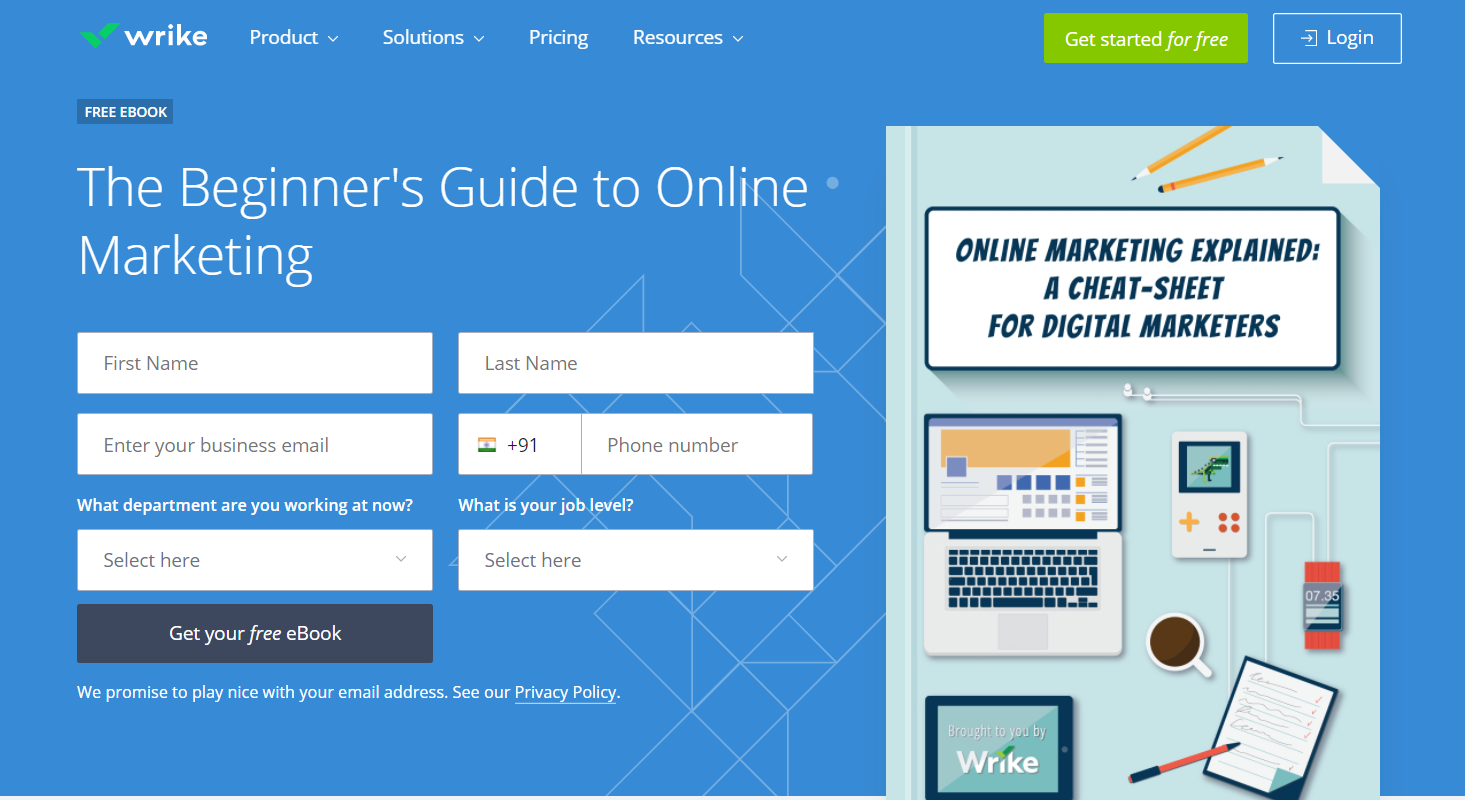
This free ebook available for downloading on Wrike, for example, knows exactly whom to target. As they want to attract budding digital marketers, naming it as a Beginner’s Guide is a great idea.
People will click on or share posts that look relatable, or add some value or entertainment to their lives. Your headlines should always aim at tapping these instincts.
5. Make your blog content easy to share
The more your content gets shared, the more followers you’re likely to get. But do not expect readers to copy your URL and post them on their social media just to get you more views. Instead, make your content easily shareable in just one click.
Adding social sharing buttons to your blog will not only make it easier for the readers but will also act as a reminder. You can also add Click-to-Tweet boxes in your blog posts, that allow readers to tweet excerpts from your posts directly on Twitter.

Look at how Marketo places the social sharing buttons right above the post where a reader just can’t miss them.
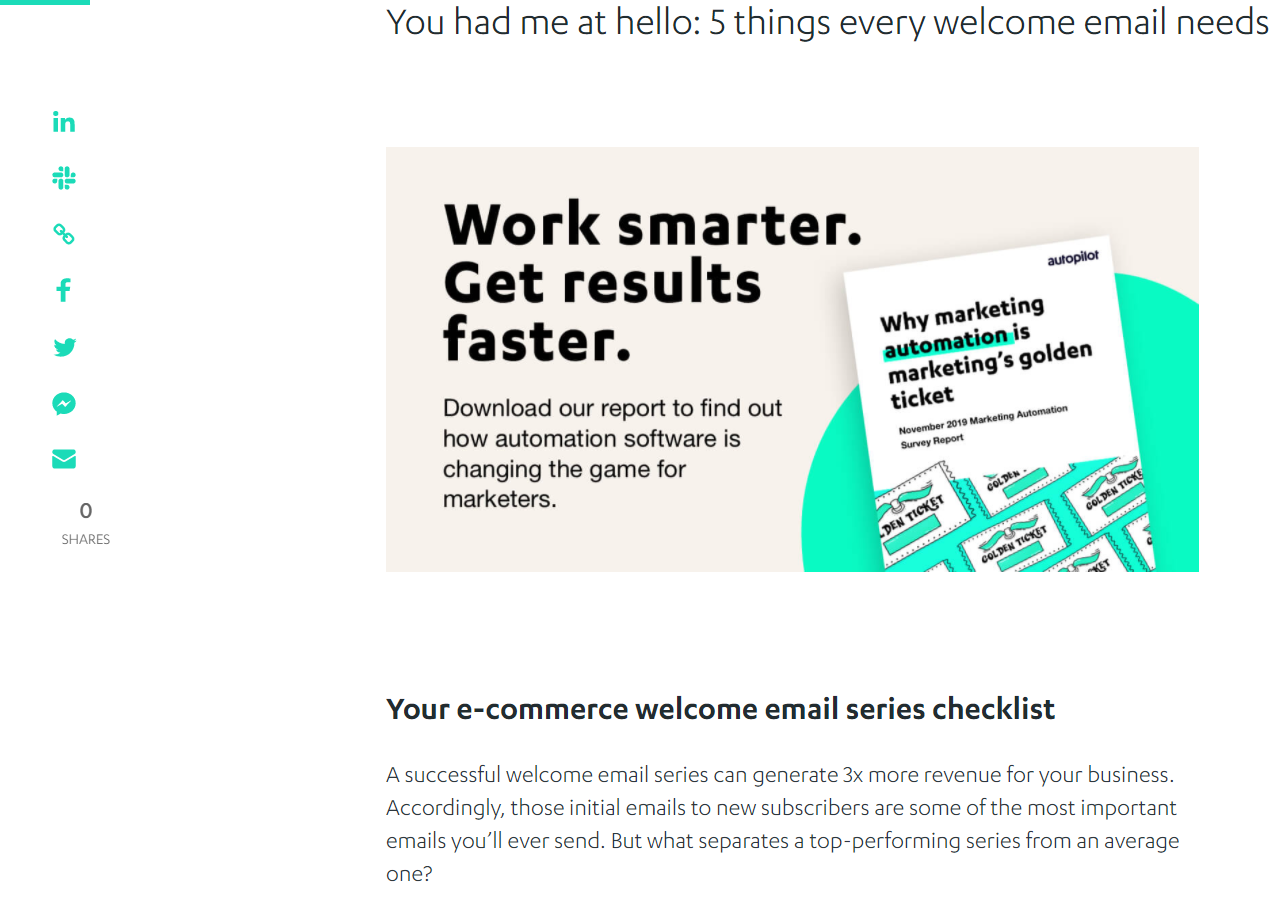
Another great way is to place the social sharing buttons on the left where they appear constantly even as you scroll down as Autopilot does on its blog, and so do we. This way readers don’t have to go searching for them.
Image sharing from your blog post is another good way to get some much-needed shares (see our image share icons). This allows readers to share the images or infographics used in your post.
6. Contribute posts to other popular blogs in your niche
Guest posting can be very effective in directing people to your blog. Find out the popular blogs in your niche. Blogs with a huge number of social shares and readers’ comments are the ones to go for.
Pitch to blog and always make it look profitable to the blog owner rather than to yourself. Also, don’t compromise on the quality of the guest post. It’s natural to want to save the best content for your own blog, but readers will only be drawn to your blog if they find the guest post valuable.
Since you are looking for email subscribers and not just visitors, it would be wise to add a link to your landing page with the opt-in form in your author bio.
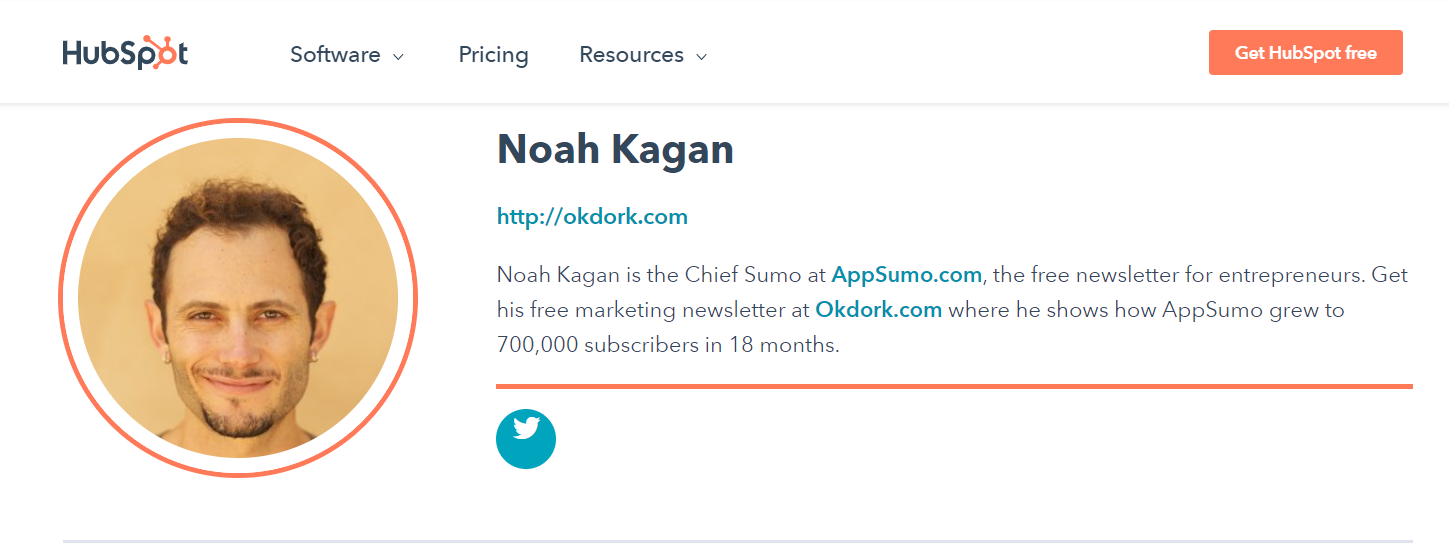
Notice how Noah Kagan has added the link to his newsletter’s landing page in his author bio on Hubspot. The link leads straight to the opt-in form on his landing page.
7. Create targeted opt-in forms, landing page and CTAs
Your landing page and opt-in forms play a major role in prompting visitors to sign up.
Opt-in form
A good opt-in form should be highly targeted and easy to fill in. It is a matter of debate among marketers whether an opt-in form should ask for a name or any other details. Because all you need is the visitor’s email address. Of course, a few details can help you personalize your campaigns later on, so you can’t abandon the idea completely.

This opt-in form on Orbit Media’s blog is a perfect example of a simple and hassle-free sign-up.
The key here is to keep your opt-in form short and quick. The simpler your opt-in form is, the more you build your email list. So remove any unnecessary steps that may give the reader time for a second thought.
Landing page
Your landing page should also be able to convince people to sign up. A dedicated subscription landing page can be a good idea. This is where people should be directed to from any other channel, rather than having to look for a subscribe option after landing on your site. Also, use your landing page to highlight what value this subscription can bring to the reader.
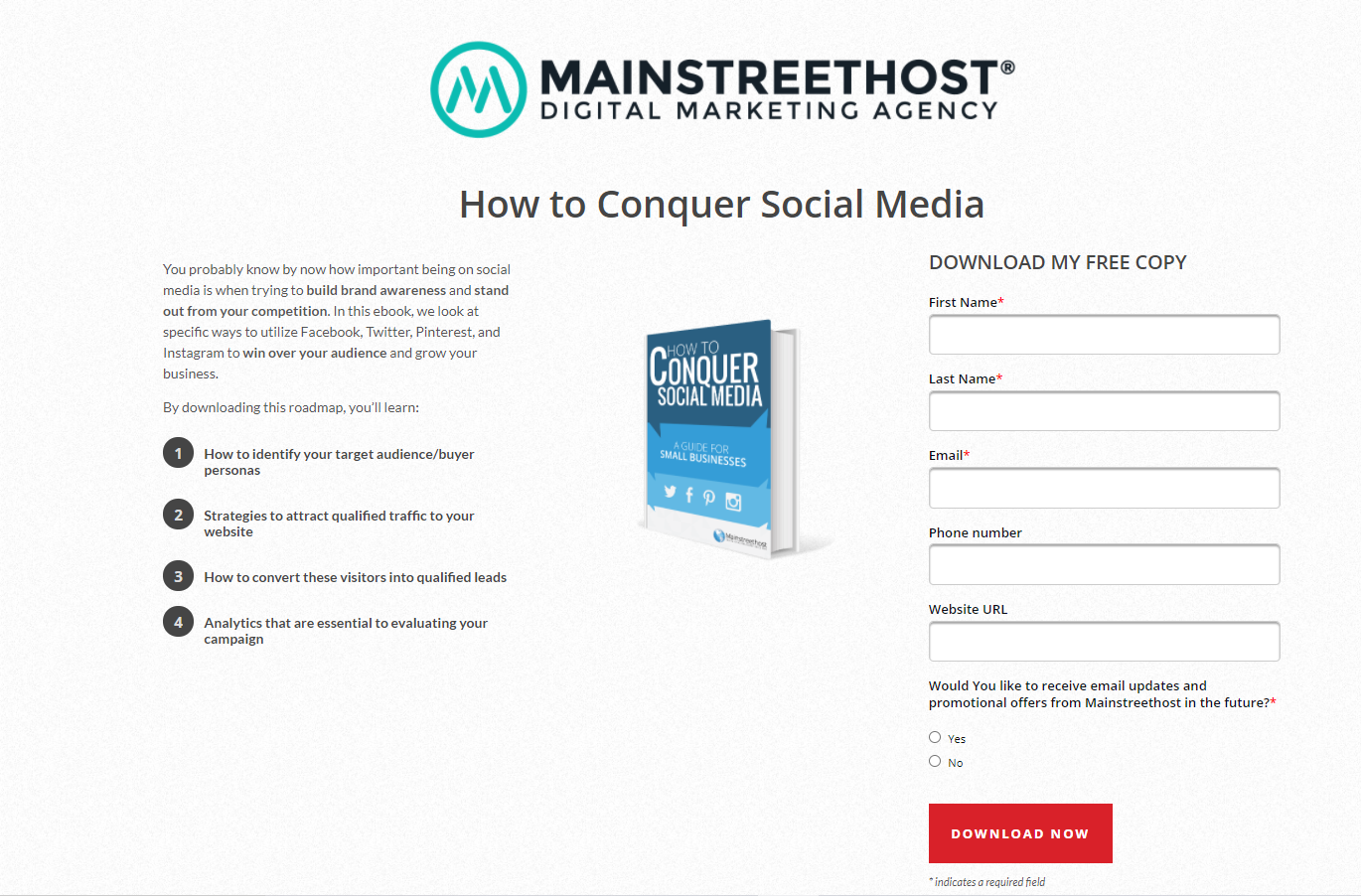
This landing page for the e-book by MainstreetHost is on point. It highlights what the reader can learn from the book without giving away anything much. It is also very clean and clutter-free.
CTA
Most importantly, don’t forget to use a good CTA on your subscription landing page. The CTA, opt-in form and subscription button should be able to grab eyeballs. Make your CTA precise and clear and place your opt-in form next to it with an unmissable subscribe button. Don’t make your visitors scroll through the entire page trying to figure out how to subscribe. Keep it simple and blatantly visible, usually near the top of the page.
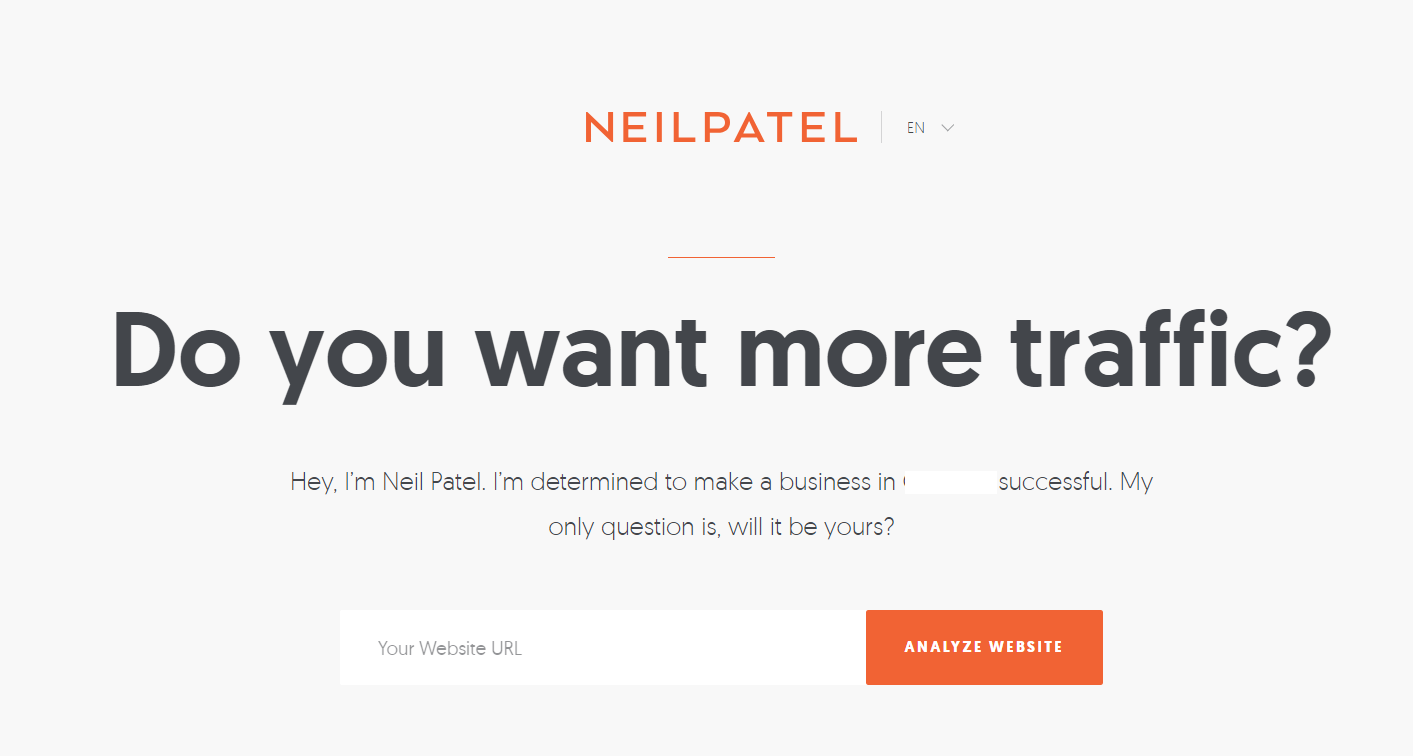
This CTA on Neil Patel’s website is bound to make a reader stop and think. Who wouldn’t want more traffic after all? Knowing where to strike is important when crafting your CTA.
You should also add your CTA to any other page that you think can get more blog subscribers. That may include your home page, the About page or even alongside your blog posts (preferably someplace where it is visible, say below the feature image or to the right of the post).
Adding your CTA to your marketing emails can help draw more visitors. Add a simple CTA at the end of every marketing email you send encouraging blog subscriptions.
CTAs can be added on other channels as well. Say you create videos or podcasts related to your blog for Youtube, add a CTA at the end. Ask people to subscribe to your blog and add the link in the description so they can find it.
Lastly, make sure that your CTA resonates with your brand image. If your brand personality is fun and informal, you can make your CTA funny and witty. If your blog has a more formal tone, you can use the same for your CTAs. Experiment and see what works best.
8. Don’t forget the mobile users
More than 50% of web traffic comes from mobile devices worldwide. So, you can’t afford to miss out on that huge chunk of potential email subscribers. Make sure your opt-in forms, pop-ups and CTAs are all optimized for mobile users.
9. Use pop-ups at the right time
Pop-ups are undeniably a necessary evil when it comes to getting more subscribers. If used at the right moment, pop-ups can help increase your conversion rates. They are very useful in grabbing your visitors’ attention. But you have to put in some effort to make them highly targeted and less annoying. If a pop-up keeps showing every 2 minutes on your site, the visitor is more likely to abandon than sign up.
Target your pop-ups based on your visitors’ activities on your site or which page they are on. A pop-up appearing just when they’re about to leave or after they have spent some amount of time on a page can be very effective.
10. Promote your blog outside of your website
Your website alone cannot give you enough reach. It is equally important to focus on different ways to promote your blog outside your website. Here are a few things to try.
Encourage your subscribers to bring more
Your existing subscribers can be of great help in finding like-minded followers. As they already know the value you’re offering, they wouldn’t mind spreading the word. So, don’t shy away from asking.
Ask your email subscribers to forward your newsletters and share your posts on social media. When you feel an email may get a particularly strong response, encourage your subscribers to forward those emails.
You may also feature some of your blog subscribers or readers in your blog posts if they work in your niche. This will encourage them to share the posts on their professional and social networks.
Podcasts
If you can start a podcast in your niche and get listed on some good podcast directories, it would make a big difference. Plan some interviews with eminent people in your niche and make the podcasts useful and interesting. Mention your blog and the benefits of subscribing to it in every podcast. So, you’re creating new content as well as opening up new avenues for promotion. You can also try to get featured in other popular podcasts by reaching out to such podcasts’ owners or managers.
Forums
You can also get more blog subscribers from being actively involved in some good forums or online communities related to your field. Contributing to these forums, through comments or posts, will urge people to see what else you have to offer on your blog.
Networking and collaboration
Networking and collaborations can help build relations and get subscribers to your blog in the process as well. Collaborate with other bloggers and offer help. Tools like Uniqode’s digital business card can streamline these professional connections, making it easier to exchange contact information and stay connected with potential collaborators at networking events. Gradually build this into a healthy business relationship. If you can find blogs that write on similar, but non-competitive topics, you can propose a cross-promotional deal.
Facebook page
Facebook, with almost 1.79 billion daily active users, is undoubtedly one of the most popular channels for promoting your blog. Having a Facebook page for your site is a basic requirement today but to make it even more fruitful, you can add a sign-up option to your page itself. Instead of asking users to visit your page and then directing them to the opt-in form, a sign-up button placed as your Facebook page CTA makes it much easier to get subscribers.
11. Show them some Social Proof
People often tend to take action under the influence of social proof. When your page visitors see that someone has just subscribed to your blog, they will be keener on doing the same. This instills trust in them. So, you must find a way to show some social proof on your site.
You can use a social proof notification app (like TrustPulse, Fomo or Nudgify) that sends a pop-up notification on your page every time someone subscribes. It wouldn’t take up much screen space but your visitors would be drawn to that little piece of information and may be urged to take action themselves.
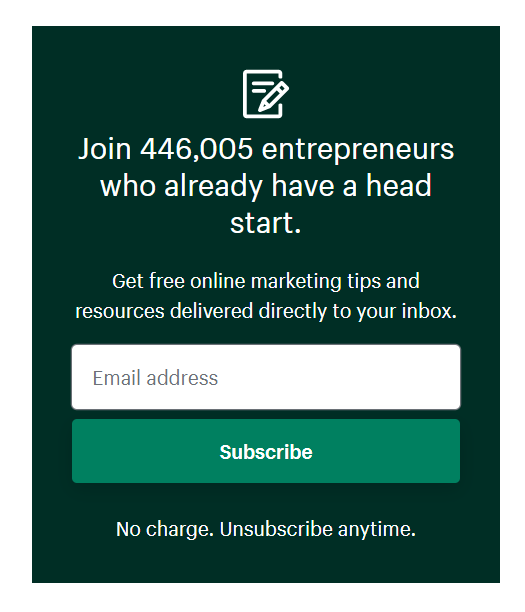
Shopify shows another great way of using social proof in the opt-in form by stating how many of your peers have already subscribed to their blog.
12. Add a quick interesting quiz
People love quizzes. If you can create a fun quiz relevant to your niche, you may be able to attract some of your readers. But keep the results hidden until they subscribe. Since most people are curious to know how they performed, this can be a good chance to get some email subscribers.
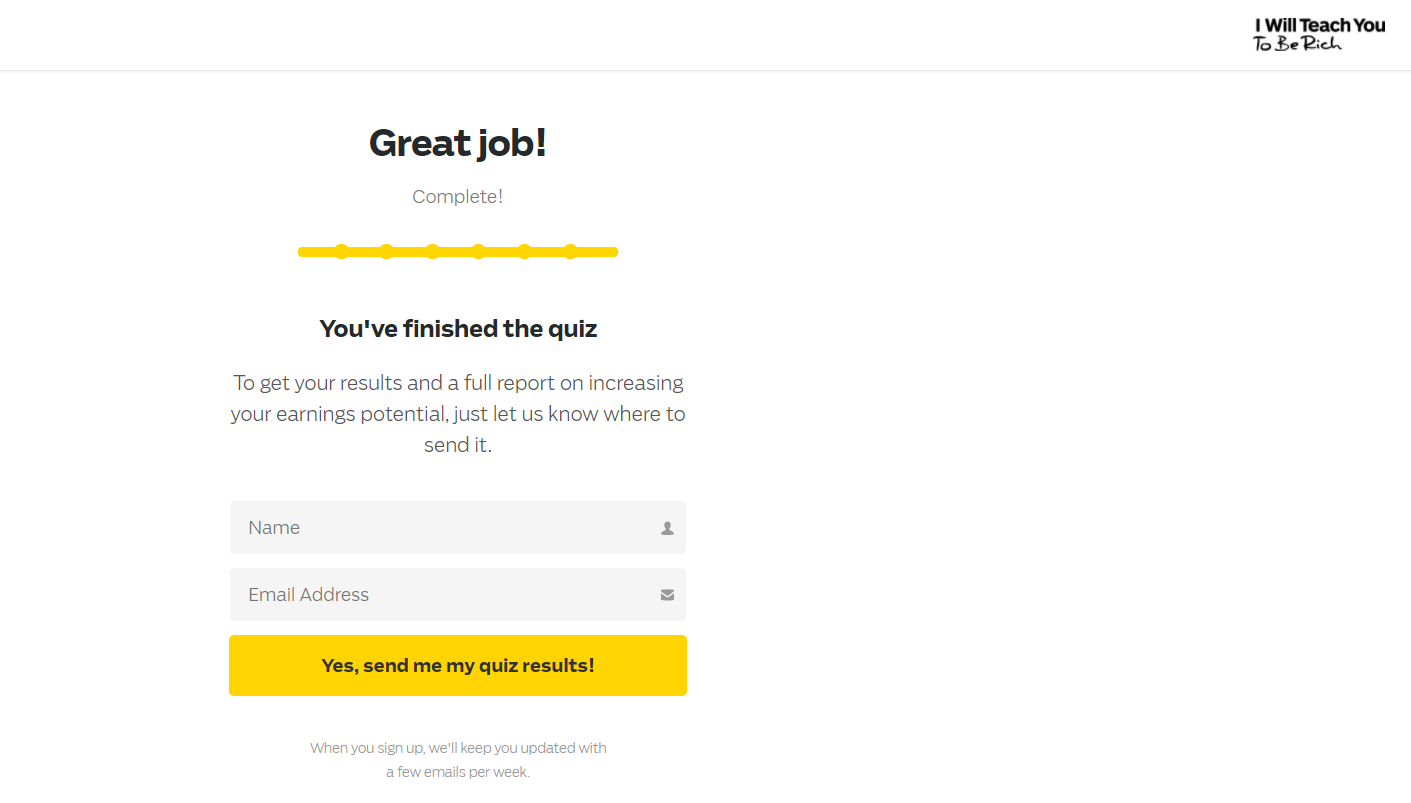
Here’s an example from author Ramit Sethi’s site, I Will Teach You To Be Rich.
13. A/B test to see what works
Finally, you may try everything mentioned above but not all of the tips will bring the same results for everyone. So, it is important to find out what works for you. It wouldn’t be wise, or feasible, to try and implement everything. Choose the tips that you think your blog needs most and then go for split testing. For instance, the landing page design or the color of your CTA button can make a big difference when it comes to building your email list. Split testing on these aspects can establish which version works best.
How to keep subscribers coming back
The job doesn’t end at just bringing in blog subscribers. Making them stay also requires the same amount of effort. Unless you live up to the standards you promised before they sign up, you could see your subscriber list dwindling in no time.
14. Pay attention to aesthetics and UX
It is important to make your blog look good. People do get attracted by aesthetics even before they start reading your content.
To make the blog content look good, here are a few common tactics.
- Use short sentences and paragraphs,
- Break down the text with subheadings,
- Add bulleted or numbered lists.
- Use relevant images and visuals.
Try to prevent cluttering on your blog by keeping everything purposeful and relevant. To achieve this you need to –
- Have a clear and comprehensive ‘About’ page for your blog .
- Keep navigation on the site easy.
- Make recent or high-performing posts visible on the home page.
- Remove anything that isn’t required, be it an outdated post or an ad.
A minimalistic and tidy blog can help improve engagement.
15. Diversify your content
Attention spans are receding as technology advances. People can get bored of reading long posts.
Try to introduce different types of content in your blog. Create podcasts and infographics in your niche. Post interviews of eminent people from the industry and discuss some burning topics. Share expert advice. Repurpose some of your old blog posts into other formats. There are endless possibilities in this arena.
Conclusion
In the end, it is you who’s to decide what works best for your blog. Experiment with different types of content and try a combination of different tactics. Find out what pays off. Every effort you make will bring returns in one way or the other.

